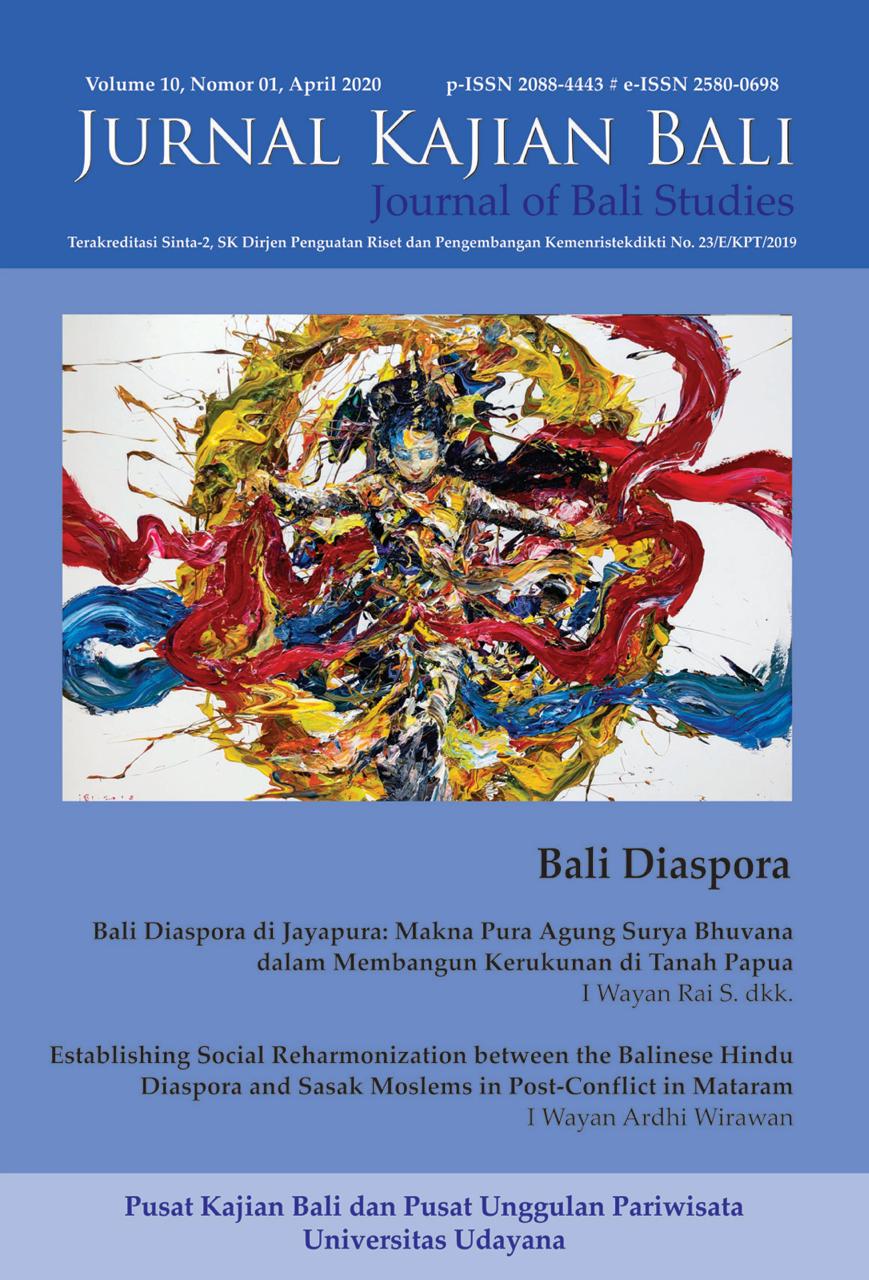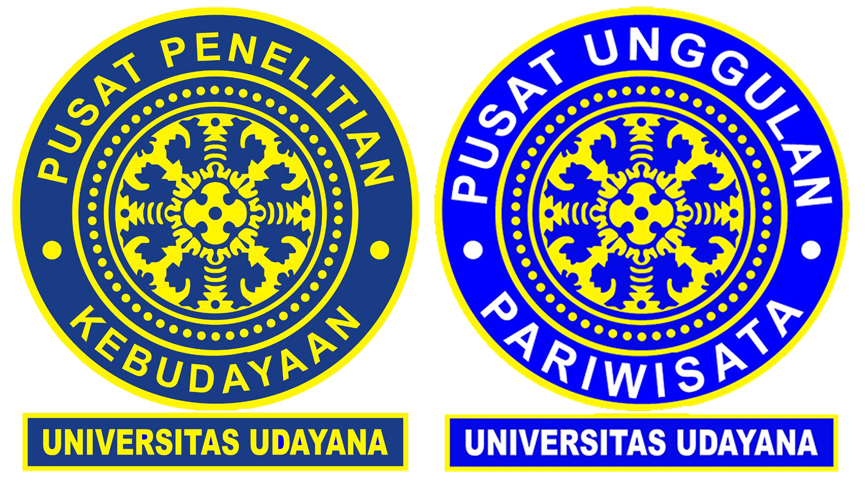The Roles and Contributions of Stakeholders in Villages Tourism Brand Management in Bali and India
Abstract
The purpose of this study is to analyze the stakeholder’s roles and contributions in brand management of village tourisms in Bali and India. A descriptive qualitative research conducted in village tourisms in Bali, Indonesia with village tourisms in Andra Pradesh, India. In-depth interviews and discussions were conducted with twenty key informants involved in the management of the respective village tourisms. The findings are the stakeholders play an essential role in branding village tourisms to be able to build a good image of the destination. All activities offered in village tourisms indirectly become the brand of the village. This brand is expected to increase tourist visits, strengthen the image and keep the village tourisms sustainable. The brand of village tourisms is an important thing to be considered by visitors in selecting the destination, so every stakeholder must contribute to create good brand image.
Keywords: roles, stakeholder, branding, village tourisms, image
Downloads
References
Arslan, Muhammad and Rashid Zaman. (2014). Impact of Brand Image and Service Quality on Consumer Purchase Intention: A Study of Retail Store in Pakistan‟. Research on Humanities and Social Sciences, Vol 4. No 22, pp 98-105.
Batra, R. and Homer, P. (2004). The Situational Impact of Brand Image Beliefs‟. Journal of Consumer Psychology 14(3), pp. 318–330.
Cavagnaro, E. & Curiel, G.H. (2012). The Three Levels of Sustainability, Sheffield: Greenleaf.
Dinanti, Asty Permatasari (2015). Pengaruh Brand Image Dan Service Quality Terhadap Purchase Intention Konsumen the Harvest Di Kota Malang. Thesis Faculty Economy and Business Brawijaya University.
Marzano, G and Noel Scott (2009). “Stakeholder Power in Destination Branding A Methodological Discussion”, Sustainable Tourism Cooperative Research Centre, an Australian Government initiative. https://www.researchgate.net/publication/37618446
Hardini, Widi, Ni Luh Putu Agustini Karta, and Jimmy Harry Putu Suarthana. (2015). “The Study on Bali Village Tourism Management Towards Four Dimensions of Experience Economy”, E-Journal of Tourism, Vol. 2, No. 1, pp. 67-74.
http://ksp.go.id/pencapaian-kementrian-pariwisata/2015
http://www3.weforum.org/docs/WEF_TTCR_2019.pdf. Lauren Uppink Calderwood Head of Aviation, Travel and Tourism Industries, Global Leadership Fellow. Access on December 2019.
https://www.klikmania.net/branding-destinasi-wisata-indonesia/. Agung Hidayat (2018). Accessed on August 2019.
https://www.marketing91.com/aaker-brand-equity-model/ Basin, Hitesh. (2019). Accessed on December 2019.
https://www.researchgate.net/figure/Aakers-brand-equity-model-Source-Aaker-1991-270_fig1_317952494. Aaker, David. 1991. Accessed Juni 2019.
http://notesmagic.blogspot.com/2015/08/brand-equity-models.html. Ovidiu loan Moisescu. 2005. Diakses Juni 2019.
Jamrozy, U. (2007). “Marketing of Tourism: a Paradigm Shift Toward Sustainability”, International Journal of Culture, Tourism and Hospitality Research Vol. 1 No. 2, 2007 pp. 117-130 q Emerald Group Publishing Limited 1750-6182 DOI 10.1108/17506180710751669
Karta, Ni Luh Putu Agustini and Victor Kappola Babu. (2018). “Digital Marketing Increase Competitive Advantage Village Tourism in Bali, Indonesia. International Journal of Interdisciplinary Current Advanced Research www.ijicar.in, Volume-01 Issue-06 June-2019, pp. 1-8.
Karta, Ni Luh Putu Agustini, Victor Kapolla Babu, and Ary Widiastini. (2019). How Does Branding of Village Tourism Strengthen the Destination Image? Booklet of The Third Bali International Tourism Conference Toward New Paradigm of Tourism Industry 4.0. https://www.balitourism.or.id/?s=booklet
Karta, Ni Luh Putu Agustini. 2018. “The Management of Village Tourism (A Comparative Study on Village Tourism in Bali, Indonesia and Andhra Pradesh India”, International Journal of Multidisciplinary Educational Research, Vol 7, Issue 7 (2) July 2018, pp.1-15.
Karta, Ni Luh Putu Agustini, I Made Sukarsa, Ni Wayan Sri Suprapti, and Agung Suryawan Wiranatha. (2014). Destination Management and Imaging Kintamani Towards Sustainable Tourism. E-Journal of Tourism Udayana University Vol. 1, No. 2: 129-145.
Keller K.L., Brexendorf T.O. (2019). “Strategic Brand Management Process”, in Esch FR. (eds) Handbuch Markenführung. Springer Reference Wirtschaft. Springer Gabler, Wiesbaden.
Keller, Kevin Lane. (2013). Strategic Brand Management: Building, Measuring, and Managing Brand Equity. Pearson Education Limited 2013. https://www.qualtrics.com/experience-management/brand/keller-vs-aaker/ diakses Juni 2019.
Kotler, Philip. (2016). Branding from Purpose to Benefidience. Marketing Journal.org. diakses 11 September 2019. http://www.marketingjournal.org/brand-purpose-to-beneficence-philip-kotler/
Kotler, Philip dan Gary Amstrong. (2005). Principles of Marketing (9th edition). New Jersey: PT Prenhallindo.
Morgan, N., Pritchard, A., & Piggott, R. (2002). New Zealand, 100% pure. The creation of a powerful niche destination brand. Journal of Brand Management, V 9(4/5), pp. 335-354.
Saftic, Darco., Ana Težak., Ninoslav Luk. (2011). Stakeholder Approach in Tourism Management: Implication in Croatian Tourism. 30th International Conference on Organizational Science Development Future Organization, March 23rd – 25th 2011, Portorož, Slovenia
Salman, Albert. (2019). The 100 Top Sustainable Brand. www.SustainableTop100.org.Press contacts: e-mail Team@SustainableTop100.org. http://sustainabletop100.org/wp-content/uploads/2019/10/2019-SD-Top100-Press-Release.pdf
Semerciöz, Fatih., Dilek Dönmez., Meral Dursun. (2008). Relationships Between Destination Management Organizations and Destination Stakeholders (A Research In Regions Of Marmara, Aegean And Mediterranean In Turkey). Journal of Commerce & Tourism Education Faculty, Year: 2008 No: 1, pp. 87-101.
Suarthana, I Ketut Putra, I Nyoman Darma Putra, I Nyoman Madiun. (2015). The Impact Of ommunity Participation On Village Tourism Management Towards Social Culture, Environment, And Economy: Comparative Study On Bedulu And Pentingsari Villages Tourism. https://sinta.unud.ac.id/uploads/wisuda/1190771005-1-Cover%20Disertasi.pdf
Tkaczynski, A., Rundle-Thiele, S. R., Beaumont, N. (2009). Insights into How Regional Tourism Operators View Their Market, International Journal of Organizational Behavior, Vol. 13, No. 1, pp. 16-27.
Top 20 countries. (2019). https://www.cntraveler.com/story/top-countries-in-the-world
WICF (Wonderful Indonesia Cobranding Forum). (2017). https://swa.co.id/wicf/minister-message/tiga-tahun-capaian-pariwisata-kabinet-kerja
Yahya, Arief. (2018). https://lifestyle.kontan.co.id/news/wonderful-indonesia-jadi-brand-of-the-year-indonesia-2018. Access September 2019.

This work is licensed under a Creative Commons Attribution 4.0 International License.



















